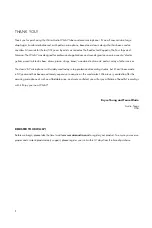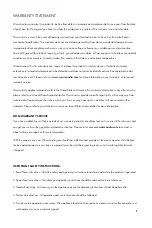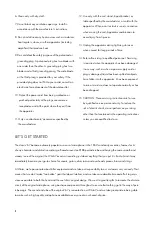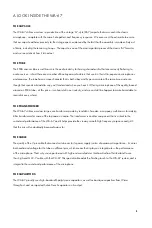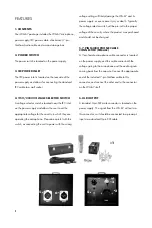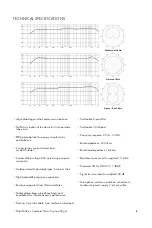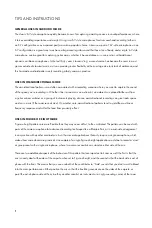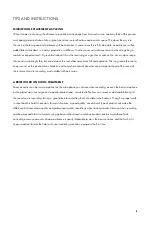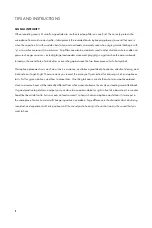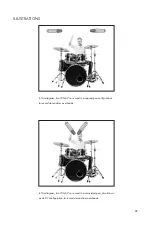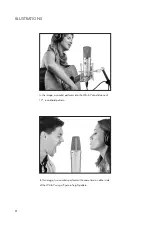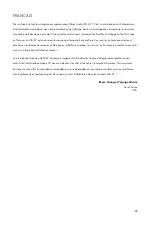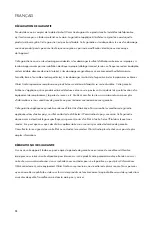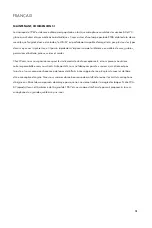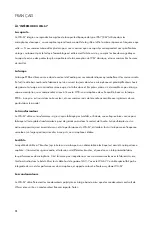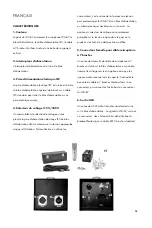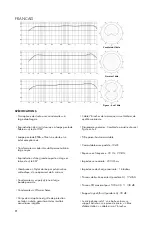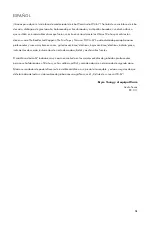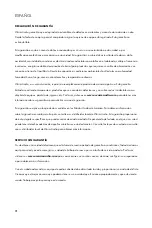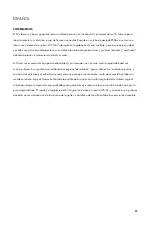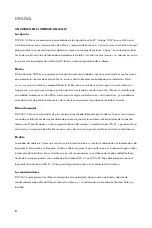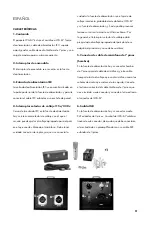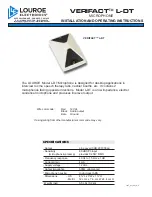
7
TIPS AND INSTRUCTIONS
GENERAL USES IN CARDIOID MODE
The classic ‘67-style microphone quickly became known for capturing amazing nuance in vocal performances, where
it shines at adding importance and weight. Using two ‘67-style microphones for drum overhead recording (either in
an X-Y configuration or as a spaced pair) was also a popular choice. Likewise, a pair of ‘67-style microphones in an
X-Y configuration is a great way to achieve a big acoustic guitar sound that has a ton of body, and a single ‘67-style
microphone can be great for capturing guitar amps, whether it be used alone or in conjunction with additional
dynamic or ribbon microphones. In the last thirty years ‘close mic’ing’ a sound source has become the norm in most
genres outside of classical music, as it can provide greater flexibility at the mix stage due to its lack of ambience, and
this has made cardioid pattern-only recording a fairly common practice.
USES IN OMNIDIRECTIONAL MODE
The omnidirectional pattern is most often associated with a recording scenario where you want to capture the sound
of the space you’re recording in. Whether it be it a room mic on a drum kit, an ambient mic placed farther out from
a guitar or bass cabinet, or a group of instruments playing at once, omnidirectional recording can give tracks space
and air in a mix (if the room sounds nice). On another note, omnidirectional patterns tend to yield the most linear
frequency response and suffer the least from proximity effect.
USES IN FIGURE-OF-EIGHT MODE
Figure-of-eight patterns are more flexible than they may seem at first, to the uninitiated. This pattern can be used with
pairs of the same microphone for advanced recording techniques like a Blumlein Pair, or in a mid-side arrangement
in conjunction with another cardioid mic; but it has several applications that only require a single microphone, which
makes them somewhat more practical. An example of a single figure-of-eight application would be to record a ‘duet’
or group vocal with a single microphone, where two or more vocalists can stand on either side of the mic.
There are two additional aspects of the behavior of this pattern that are important to know as well: the first is that the
mic is nearly deaf at the sides of the capsule when set to Figure-of-eight, and the second is that the back side is out of
phase with the front. This means that you can use both of these attributes to “hide” sounds that you don’t want to bleed
into the main performances. Either position the mic so that the troubling sounds are on the sides of the capsule, or
point the out-of-phase side at them, be they another vocalist, an instrument or an ugly-sounding corner of the room.


